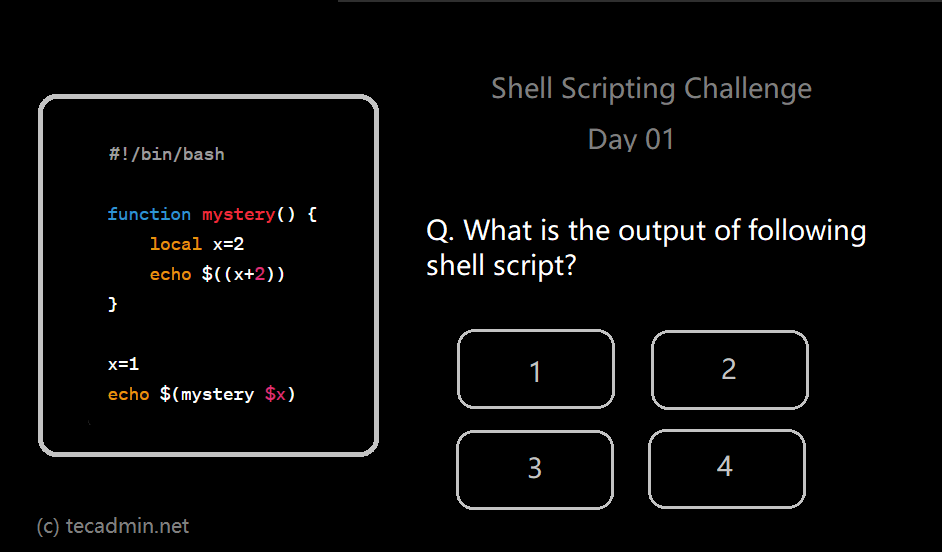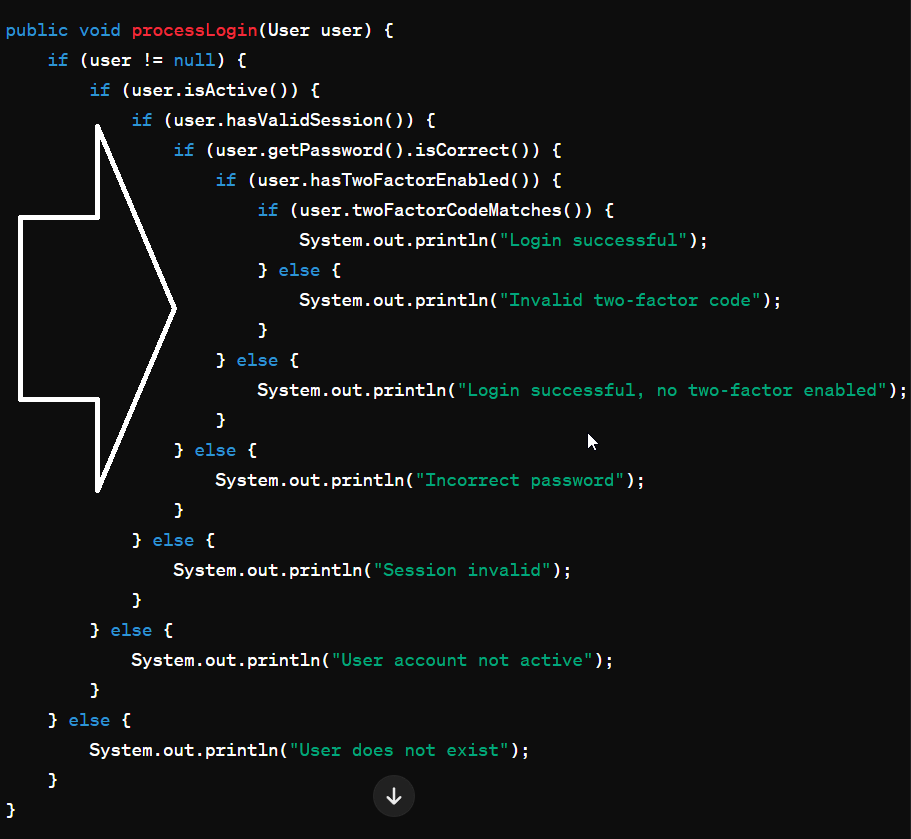Welcome to Module 1 of our Linux System Administration Multiple-Choice Questions series! This module is designed as your first step into the world of Linux system administration. Here, you will encounter a range of questions that cover basic concepts and essential commands fundamental to managing Linux systems. Perfect for beginners or as a refresher for seasoned professionals, this module sets the groundwork for more advanced topics in subsequent modules. Q1 What is the default port number for SSH? A 21B 22C 23D 80 Show Answer Check Answer Correct Answer: B The default port number for SSH (Secure Shell) is 22.…
Author: Rahul
Welcome to our Shell Scripting Challenge! Today, we have an engaging script designed to test your understanding of some fundamental concepts in shell scripting, particularly focusing on variable scope and function behavior. Examine the script below, try running it on your own, and then explore the explanation to enhance your knowledge of how shell scripts operate. The Shell Script #!/bin/bash function mystery() { local x=2 echo $((x+2)) } x=1 echo $(mystery $x) Challenge Take a moment to predict what you think the output of this script will be when executed in a Bash shell. Writing down your guesses can help…
When developing software, maintaining clean and readable code is crucial. One common pitfall that hampers readability and maintainability is the “Arrow Anti-Pattern”. This pattern emerges when code is heavily nested, leading to a structure that visually resembles an arrow pointing to the right. Let’s explore this anti-pattern using a Java example and discuss strategies to refactor and improve the code. Understanding the Arrow Anti-Pattern The Arrow Anti-Pattern occurs primarily due to deeply nested conditional structures. This usually happens when developers continue to add levels of if statements or loops within others, often in an attempt to handle multiple conditions. While…
Java, one of the most widely used programming languages, offers a rich set of operators to perform various operations, from basic arithmetic to complex logical evaluations. Understanding these operators and their precedence is crucial for anyone looking to master Java programming. To aid in this journey, we have compiled a meticulously curated set of multiple-choice questions (MCQs) focusing on Java Operators. This collection spans from the foundational arithmetic and relational operators to the more nuanced conditional and bitwise operators. Whether you’re a novice programmer aiming to solidify your Java fundamentals or an experienced developer looking to brush up on the…
In the ever-evolving landscape of technology, Linux remains a cornerstone for developers, sysadmins, and IT professionals. Its robustness, security, and open-source nature make it a preferred choice for powering servers, desktops, and embedded systems across the globe. Whether you’re a seasoned Linux user or new to the command line, mastering Linux commands and understanding system administration are crucial skills. To help you gauge your knowledge or prepare for Linux-related interviews, certifications, or just to brush up on your skills, we’ve compiled a comprehensive set of multiple-choice questions (MCQs). These questions cover a wide range of topics, from basic commands and…
Introduction to Bash Scripting Bash scripting is a powerful tool for automating tasks on Unix-like operating systems. Bash, which stands for Bourne Again SHell, is not only the default command-line shell for Linux but also a scripting language in its own right. By writing bash scripts, users can automate repetitive tasks, streamline their workflow, and even manage systems and applications efficiently. One of the main advantages of bash scripting is its simplicity and ease of use. With just a basic understanding of command-line operations and a few scripting fundamentals, users can create scripts that perform complex operations, making it an…
Java, one of the most widely used programming languages, offers a versatile platform for developing a range of applications, from web to mobile to enterprise solutions. As beginners embark on their journey to master Java, understanding its basics becomes paramount. To aid in this educational pursuit, we present a comprehensive set of 75+ multiple-choice questions (MCQs) covering the fundamental concepts of Java programming. These questions span topics such as data types, control structures, object-oriented programming (OOP) principles, and much more. Accompanied by correct answers and concise explanations, this collection aims to reinforce learning and clarify common misconceptions, providing a solid…
Node Version Manager (NVM) is an command-line utility for installing and managing Node.js versions. This tool is helpful for developer to quickly install specific Node.js version. It also allows users to install, manage, and work with multiple Node.js versions on the same system without conflict. All the Node.js developers which is upgrading to the latest Ubuntu 24.04 can use this tools to setup the development environment. This also helpful for setting up production servers that required multiple versions as same time. This tutorial will help to install NVM on Ubuntu 24.04 and demonstrate how to use it to manage your…
In the world of file compression, .xz and tar.xz files stand out for their efficiency and widespread use, especially in the Linux and Unix communities. These formats offer significant compression, making them ideal for distributing software packages, archiving data, and sharing large files. This step-by-step guide will walk you through the process of unpacking .xz and tar.xz files, ensuring you can access their contents regardless of your operating system. Understanding .xz and tar.xz Files Before diving into the extraction process, it’s essential to understand what these file formats are: .xz: A file compressed using the XZ compression algorithm, known for…
In the realm of system administration and automation, Bash scripting stands as a formidable tool for streamlining repetitive tasks, ensuring consistency, and saving time. One particular scenario where Bash scripting shines is in automating end-of-month tasks, such as data backup, report generation, or billing processes. A crucial step in this automation is determining whether the current day is the last day of the month. This article guides you through creating a Bash script to do just that, enabling your systems to intelligently manage monthly tasks without manual intervention. The Challenge The end of the month can vary from 28 to…


